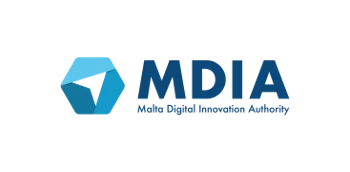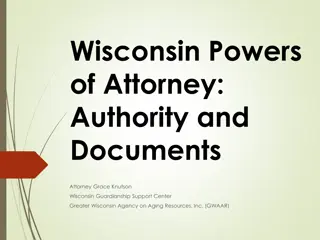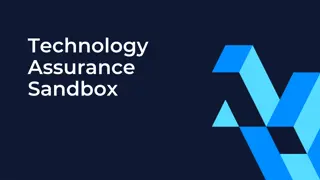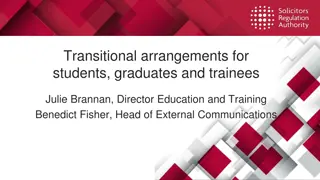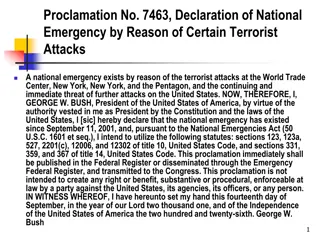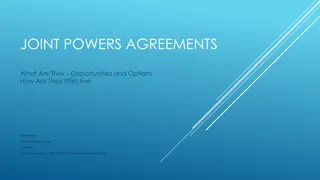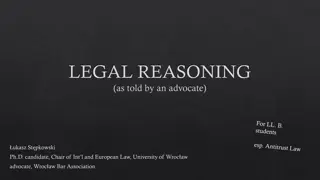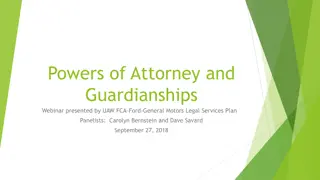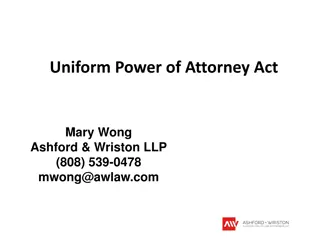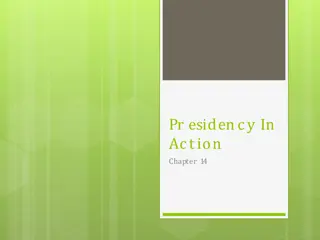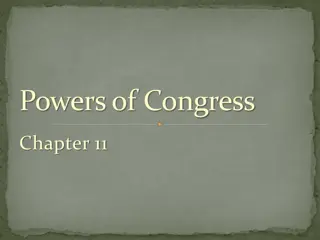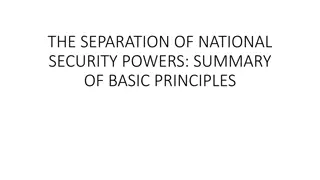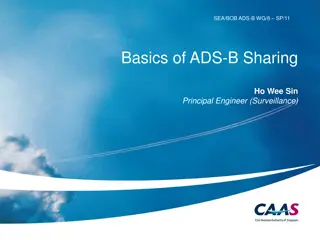Legal Overview and Powers of MDIA for Innovative Technology Arrangements
This legal overview delves into the powers of Malta Digital Innovation Authority (MDIA) to roll out Technology Arrangements and Innovative Technology services, ensuring legal compliance, drafting guidelines, and covering all forms of innovative technology. The objective is to clean out inconsistencies, define critical applications, and foster the advancement and utilization of innovative technology in various sectors.
Download Presentation

Please find below an Image/Link to download the presentation.
The content on the website is provided AS IS for your information and personal use only. It may not be sold, licensed, or shared on other websites without obtaining consent from the author. Download presentation by click this link. If you encounter any issues during the download, it is possible that the publisher has removed the file from their server.
E N D
Presentation Transcript
SCOPE OF LEGAL OVERVIEW 1. TO ENSURE MDIA HAS THE POWER AT LAW TO ROLL OUT TAAF 2. TO CLEAN OUT INCONSISTENCIES (IF ANY) AND LIMITATIONS 3. TO DRAFT GUIDELINES IN ACCORDNACE WITH LEGAL PARAMETERS
OBJECTIVE 1 - POWERS OF MDIA MATERIAL SCOPE OF LAW TO COVER: A. ALL FORMS OF INNVOVATIVE TECHNOLOGY B. ALL FORMS OF RECOGNITION, CERTIFICATION AND LICENSING
OBJECTIVE 1: POWERS OF MDIA / LAW IS TO COVER ALL FORMS OF INNOVATIVE TECHNOLOGY CURRENT ARRANGEMENTS LIMITED TO: A. DLT B. SMART CONTRACTS C. CRITICAL APPLICATIONS D. ANY OTHER ITA DESIGNATED BY MINISTER THROUGH NOTICE DEFINITION OF INNOVATIVE TECHNOLOGY ] MDIAA / ITAS ] ITAS Schedule 1
Critical applications - Definition ITASA First Schedule 2. Software and other architectures, not necessarily used in the context of DLT, smart contracts and related applications as well as other similar arrangements, but which are used or meant to be used, as a stand-alone or as part of a solution in sectors and areas which are deemed to be of a risky or critical nature, where their failure or misuse could amongst other things result in loss of life, grave prejudice to the well-being and rights of natural persons, significant asset loss or damage and significant damage to the environment.
OBJECTIVE 1: POWERS OF MDIA FORMS OF AUTHORISATIONS OBJECTIVES OF MDIA - Article 4 MDIAA (2)(b) To foster, promote and facilitate the advancement and utilisation of innovative technology arrangements and their design and uses (3) The Authority shall encourage the development of innovative technology in as wide a manner and for as many uses as possible so as to achieve its benefits in as many economic and social sectors as possible, including, but not limited to, in financial services, health and education, voluntary organisations, public administration and transport.
OBJECTIVE 1: POWERS OF MDIA FORMS OF AUTHORISATIONS OBJECTIVES OF MDIA - Article 6 MDIAA (1) It shall be the purpose of the Authority to address the development in Malta of all innovative technology arrangements and innovative technology services in order to achieve the principles and objectives outlined in Part II (incl. Article 4) (3)(d) (The Authority shall) provide facilities for the RECOGNITION, certification, registration, or otherwise grant or issue of any authorisation for the carrying out of any lawful operation or activity relating to any matter regulated by any special law which the Authority is entitled to administer or enforce;
OBJECTIVE 1: POWERS OF MDIA FORMS OF AUTHORISATIONS RECOGNITION: The formal recognition by the Authority which is sought with reference to an innovative technology services provider or an innovative technology arrangement and which the Authority is entitled to grant through or by the provision, issuance, validation, confirmation, certification or otherwise in writing to an applicant and includes any licence, permission, authorisation, approval, confirmation, certification by or registration with the Authority in terms of any special law which the Authority is entitled to administer or enforce and the terms ''authorisation'' or ''authorisation holder'' in the provisions of this Act shall be construed as a reference to the relevant form of recognition, or the holder thereof, as the case may be INNOVATIVE TECHNOLOGY AUTHORISATION: includes any form of recognition issued under this Act, or any special law which the Authority is entitled to administer or enforce, whether with reference to innovative technology arrangements or with reference to innovative technology services.
OBJECTIVE 1: POWERS OF MDIA SETTING THE GROUNDRULES ARTICLE 26 (2) Rules shall be prescribed by the Authority in relation to all forms of recognition it may be empowered to grant or issue under any other special law which the Authority is entitled to administer or enforce. (3) The rules may also determine the qualifications and requirements for the issue of any innovative technology authorisations, the conditions under which innovative technology authorisations are issued, the types of innovative technology authorisations relative to innovative technology arrangements or innovative technology services and all related matters. (4) The Authority may also determine when innovative technology arrangements are exempt from such requirements
OBJECTIVE 1: POWERS OF MDIA SETTING THE GROUNDRULES ARTICLE 27(2) a) In granting an innovative technology authorisation the Authority may subject it to such conditions as it may deem appropriate having regard to general market impacts, and having granted an innovative technology authorisation it may, from time to time, vary or revoke any condition so imposed or impose new conditions. b) For the better carrying out of the provisions of this Act, the Authority may, from time to time, issue and publish innovative technology authorisation rules which shall be binding on innovative technology authorisation holders and others as may be specified therein. c) In the interest of transparency and market awareness, such innovative technology authorisation rules may lay down additional requirements and conditions in relation to activities of innovative technology authorisation holders, the conduct of their business, their relations with customers, the public and other parties, their responsibilities to the Authority, reporting requirements, financial resources and related requirements, if any, and any other matters as the Authority may consider appropriate.
CONCLUSION: RISK-BASED APPROACH OF TAAF IN ACCORDANCE WITH ARTICLE 27(3): (3) When considering whether to grant or refuse to grant an innovative technology authorisation the Authority shall, in particular, have regard to - (a) the protection of the general public and organisations; (b) the protection of the reputation of Malta taking into account Malta s international commitments; (c) the promotion of innovation, competition and choice; and (d) the reputation and suitability of the applicant and all other parties connected with innovative technology arrangements.
Conclusion Way Forward: Extend List of Forms of Technology falling within the remit of the MDIA (example IOT, Cloud Computing, Big Data) Publish clear Guidelines Tech does not live in a vacuum it is applied in different sectors, some of which are regulated so where regulatory obligations are imposed on the tech through sector-specific regulation, these need to be captured.




